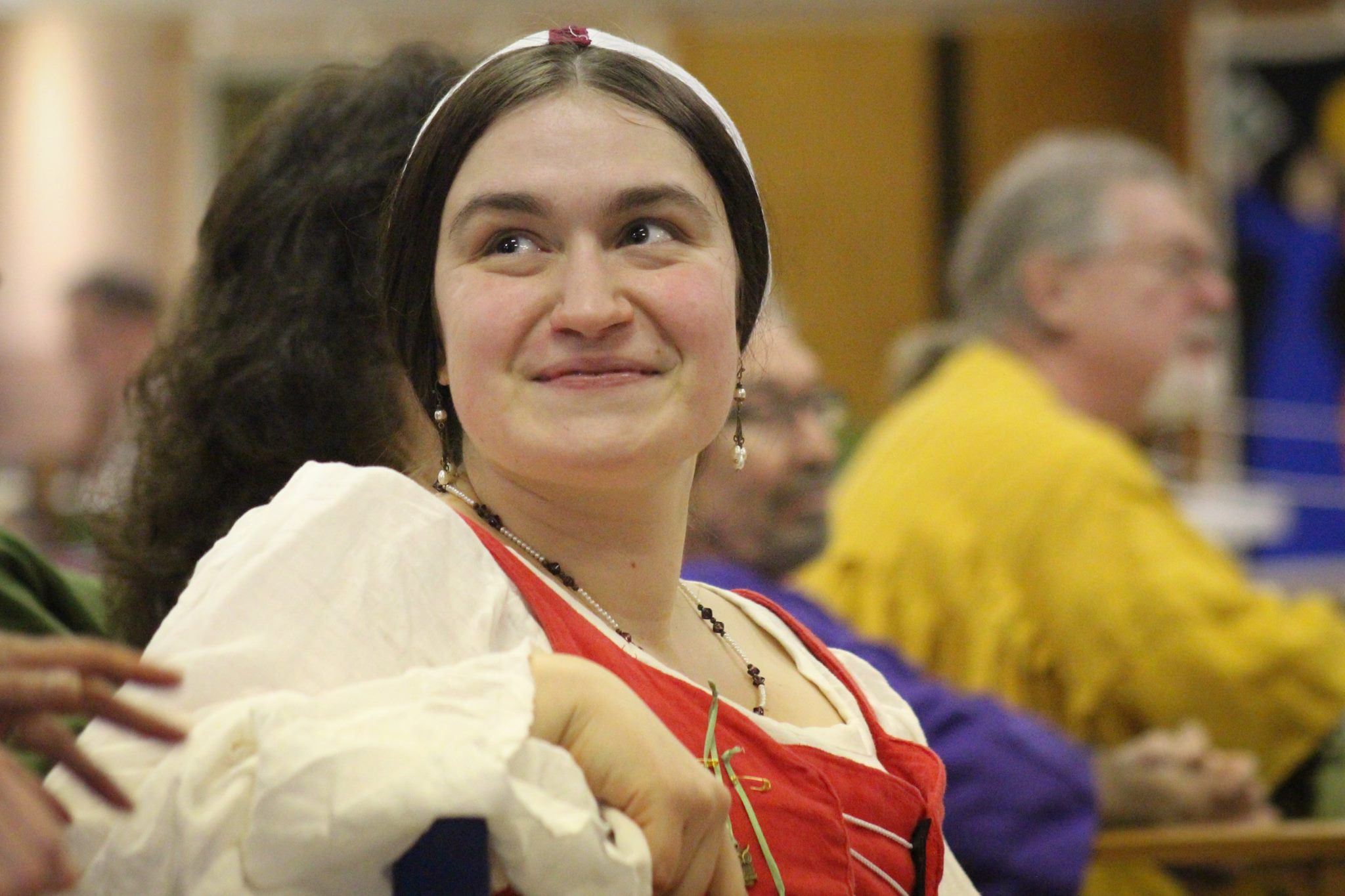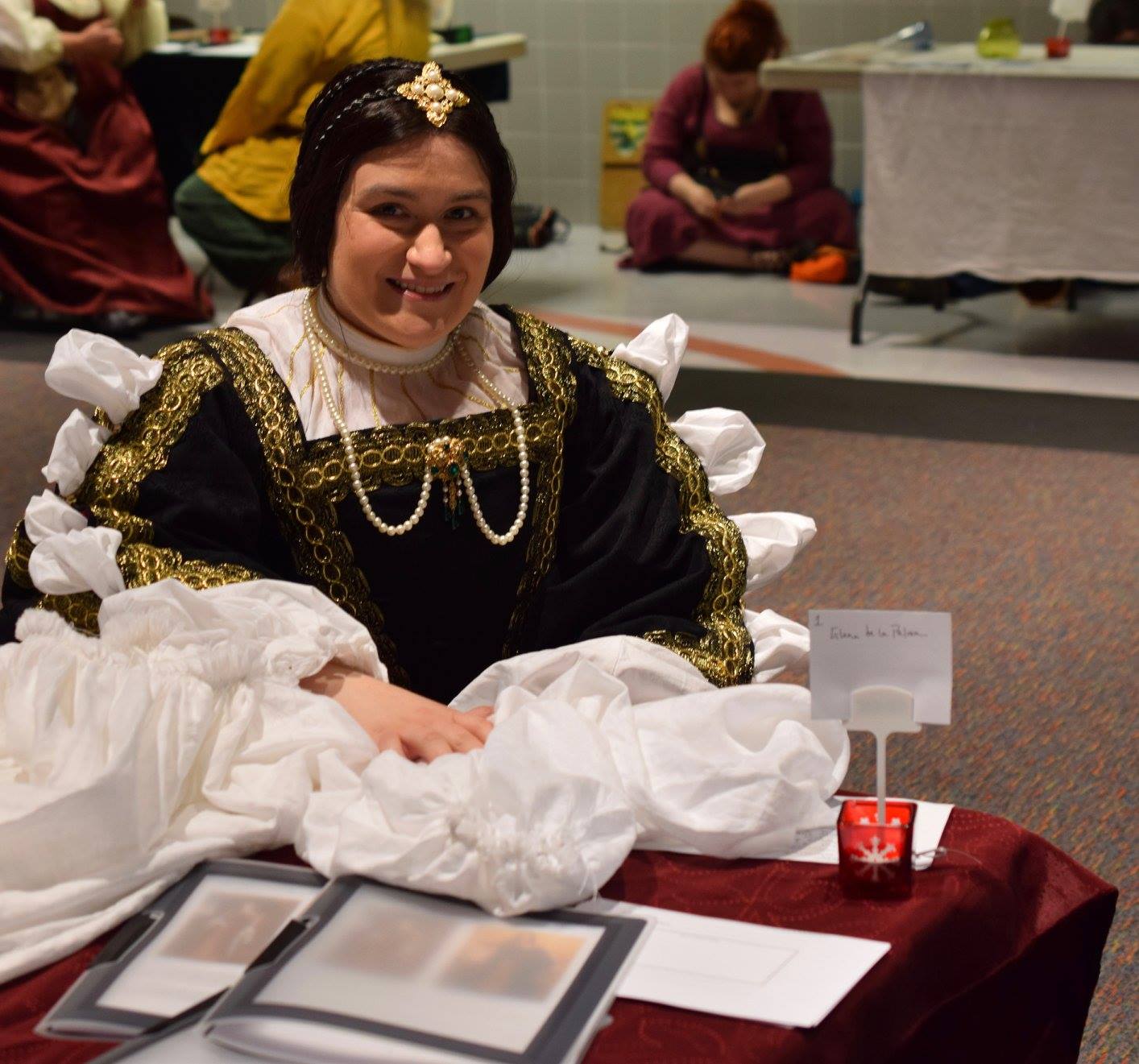I absolutely love to teach! Please feel free to share these class handouts and research pieces – and don’t hesitate to reach out with questions!
| Name | First Taught | Description |
| One Piece or Two: Cofia y Tranzado Construction Evidence from the Inventories of Isabel of Portugal | Research compiled September 2022 | A short analysis of the tranzados described in the inventories of Isabel of Portugal’s belongings to explore cofia y tranzado were constructed as one piece or two. |
| Fabric And Embellishment In Late Period Spanish Clothing | May 2022 – War Practice | What fabrics would a Spanish queen wear? How would her garments be decorated? This class explores some answers to these questions by surveying recorded inventories of Isabel of Portugal, Juana of Castile, and other contemporary Spanish royal women from 1530 – 1600. An initial quantitative analysis of my inventory digitization project |
| En Espanol Defining Characteristics of Spanish Women_s Fashion from 1500-1600 | November 2019 – Fabric, Fiber, & Fighting | What makes Spanish fashion distinct from, well, anywhere else? That’s a big question, but we’ll try to answer it for one particular segment: women’s fashion from 1500-1600. We’ll look at everything from materials, cut, and construction to embellishments, undergarments, and accessories, reviewing commonalities from image and inventory sources of the time. |
| Cofia Y Tranzado The Omnipresent Spanish Headwear | June 2018 – Spring AEcademy | In 1500s Spain, the cofia y tranzado (cap and braid case) was all the rage. Worn by women of virtually every rank, it could dress up, dress down, and be styled in a wide variety of ways. This class will survey the many different examples we have of the garment in use, and will include a pattern and all details needed to make and wear your own (it’s easy!) |
| Pasamanos: A Survey of Spanish Needlework | May 2018 – Academy of St. Clare | Spain has a rich tradition of needlework dating back hundreds of years into period. This class will trace the development of this tradition, starting with some of the earliest examples and extending to lacemaking, drawnwork, and the other highly complex styles found decorating ruffs, camisas, and more during the Spanish Golden Age. Focus is on exposure to styles, not on learning the techniques involved. |
| Spanish Clothing Terms for Non Spanish Speakers | August 2016 – Pennsic | What is a camisa? What are tiras? This class is a guide to the words used for types of clothing, fabric, decorative elements, and more in late-period Spanish clothing. Created for the non-Spanish speaker, terms are (whenever possible) illustrated with images or clearly described. No knowledge of Spanish clothing or Spanish language needed! |
| Period Patterns 16th Century Tailoring Books | August 2016 – Pennsic | Juan de Alcega and other master tailors of the 16th century produced tailoring books rich with detailed instructions and complete patterns. These were widely used to construct garments of the time, and they can help us improve our garment construction today. Will cover patterns for both men’s and women’s clothing! |
| A Brief History of Undergarments | January 2016 – College of 3 Ravens | The pair of bodies and the farthingale are major influences that shaped late period fashion (literally and figuratively). But what did they really look like? When did they first show up? What kind of extant examples do we have of them? This class will give a general sense of how these two items evolved during the late period, touching on construction, materials, and variations in use and style in the centers of European fashion – and doing a little myth busting along the way. |
| From Seeing to Sewing Intro To Patternmaking | November 2015 – Fall AEcademy | Brief description: Have you ever looked at a period painting and thought “Wow, that looks great!” only to have your heart immediately sink as you realize that you’ve got no idea where to start actually making the thing in the painting? This class will (hopefully) help with that by starting you down the wonderful rabbit-hole that is making your own patterns. |


